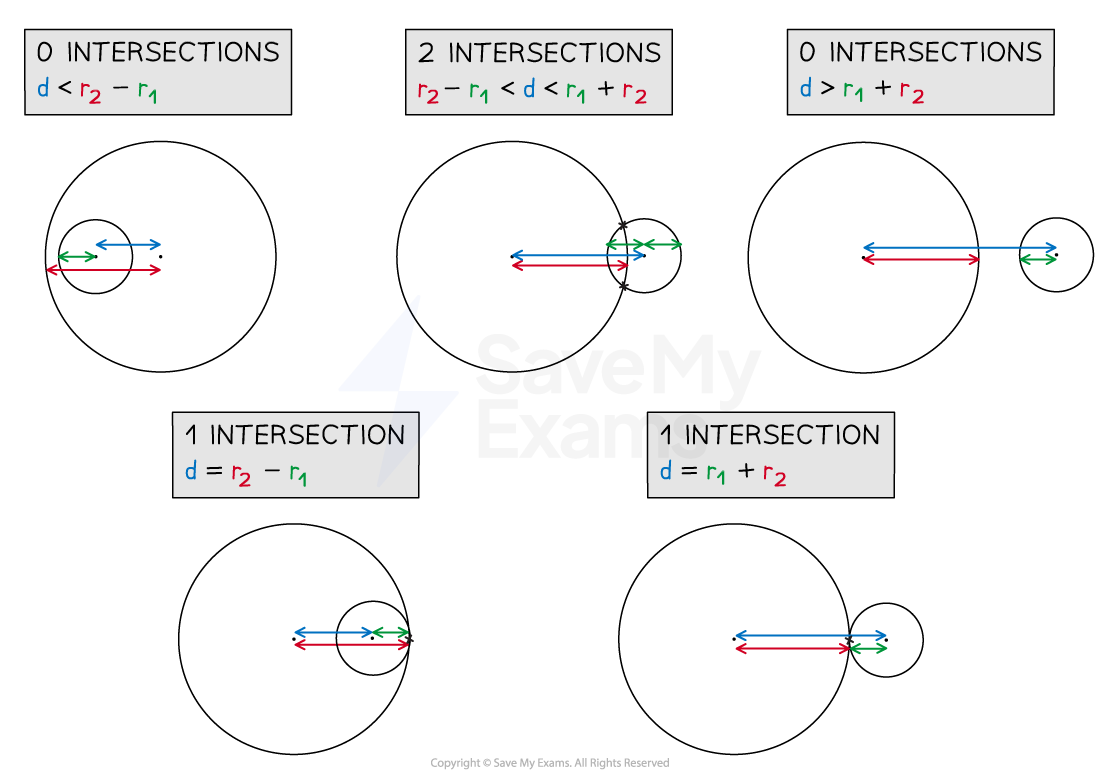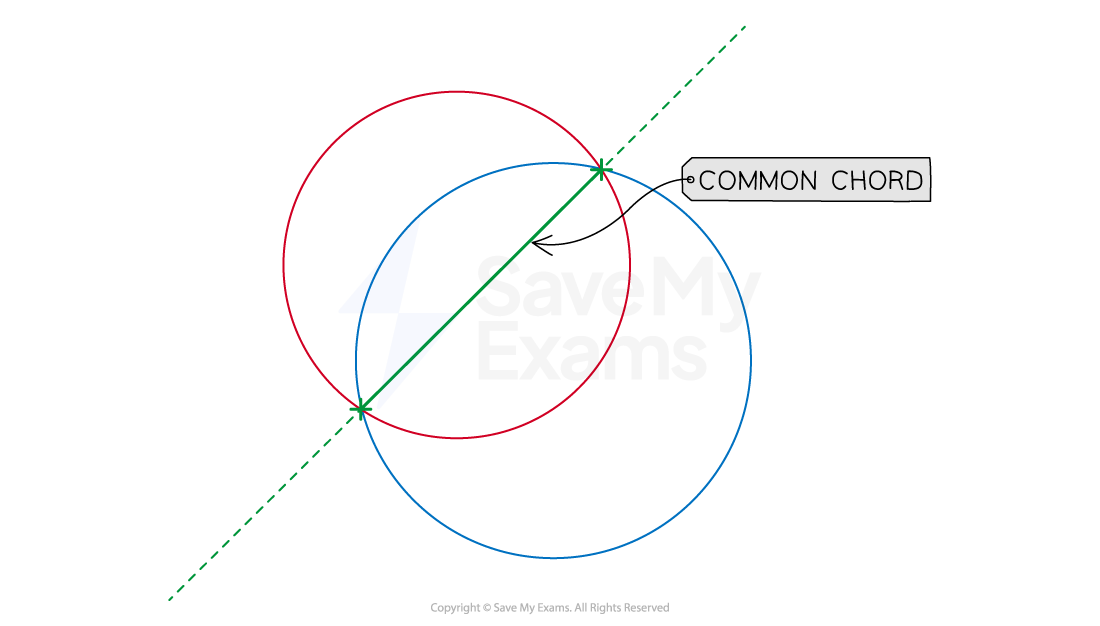Intersection of Two Circles (Cambridge (CIE) IGCSE Additional Maths): Revision Note
Exam code: 606
Intersection of two circles
What is meant by the intersection of two circles?
Two circles may intersect once (touch), twice (cross), or not at all
Touching circles may be referred to as tangent to each other
they would have a common tangent line
How do I determine if two circles intersect or not?
Find the distance,
, between the centres of the two circles
This can be found using Pythagoras' theorem
For centres
and
,
The radii of the two circles,
and
, where
are also needed
If
then the circles intersect twice
If
or
then the circles intersect once
If
or
then the circles do not intersect

Rather than trying to remember those formulae, try to understand the logic behind each situation
How do I find the coordinates of the point(s) of intersection of two circles?
Once it has been determined that the circles do intersect at least once, the following process can be used to determine the coordinates of any intersections
STEP 1 Rearrange both circle equations so that one side is zero
STEP 2 Put the circle equations equal to each other (i.e. solve simultaneously!)
STEP 3 Expand/rearrange/simplify into a linear equation
The
and
terms will cancel, leaving an equation of the form
or
(These are 'diagonal line', 'vertical line' and 'horizontal line') The intersection(s) will lie on this line
STEP 4 Substitute the linear equation into either of the circle equations Solving this equation will lead to either the
-coordinate(s) or
-coordinate(s) of the intersection(s)
STEP 5 Substitute the
(or
) coordinates into either circle equation to find the corresponding
(or
) coordinates This step will not be needed in the case of the linear equation being of the form
or
Examiner Tips and Tricks
Even if not given, or asked for, a sketch of the circles can help visualise their positions relative to each other
You can then see if your final answers make sense with your sketch
Worked Example
a) Determine the number of intersections between the circles with equations and
.
has centre
and radius
.
has centre
and radius
.
Using a sketch may help you to 'see' that .
Compare with the sum and difference of
and
.
The circles intersect twice
b) Determine the coordinates of any intersections between the circles with equations and
.
STEP 1 - Rearrange both equations so zero is on one side
STEP 2 - Put the equations equal to each other
STEP 3 - Expand and rearrange until in linear form
STEP 4 - Substitute into either circle equation
STEP 5 - Not required in this case
The intersections of the two circles have coordinates (1, 1) and (1,-1)
Equation of common chord
What is a common chord?
For circles that intersect twice the common chord is the line that joins the points of intersection
This line is a chord in both circles
Circles that intersect once (touch) have a common tangent

How do I find the equation of a common chord?
As a common chord is a straight line, its equation will be of the form
unless
it is a horizontal line, in which case its equation will be of the form
it is a vertical line, in which case its equation will be of the form
Depending on the known information, there are two ways to find the equation of the common chord
If the equations of the circles are known
Equate the equations and rearrange the equation into one of the three forms above
For example,
So the equation of the common chord is
If the points of intersection are known
Use the method of finding the equation of a straight line from two known points
If the intersection points are
and
then the equation of the common chord would be
is the gradient and it can be easier to work this out first, separately
Worked Example
Two circles intersect at the points with coordinates and
.
Find the equation of the common chord of the two circles.
The points of intersection are known. Use the method of finding the equation of a straight line from two known points.
First find the gradient,
Apply to get the equation of the common chord.
The equation of the common chord is

Unlock more, it's free!
Did this page help you?